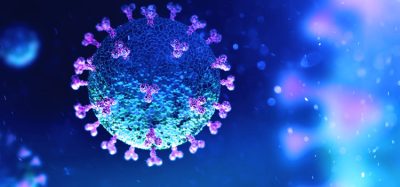New trivalent vaccine for clade 1 sarbecoviruses
Posted: 2 April 2024 | Drug Target Review | No comments yet
The vaccine provided complete protection with no detectable virus in the lungs and could be a routine part of people’s medical treatment.


Researchers from the Georgia Institute of Technology and the University of Wisconsin-Madison have developed a new vaccine that provides broad protection against SARS-CoV-2 variants, as well as other bat sarbecoviruses. The trivalent vaccine demonstrates complete protection with no trace of virus in the lungs.
Since the COVID-19 pandemic began, the search for an optimal vaccine has been a priority. Although the mRNA vaccines were hugely innovative, annually updating these boosters for specific SARS-CoV-2 variants is inefficient for both researchers and patients. Dr Ravi Kane, professor at the School of Chemical and Biomolecular Engineering, commented: “We had been working on strategies to make a broadly protective vaccine for a while…This vaccine may protect not just against the current strain circulating that year, but also future variants.”
Dr Kane joined Georgia Tech in 2015, and since then, he and his colleagues have been working on the technologies to develop more widely protective vaccines for viruses. When the pandemic occurred, the team realised how fast SARS-CoV-2 mutates and the difficulty this posed. To overcome this, one option was to make a vaccine that is widely preventative against the virus, or use the influenza vaccine as a model, which updates annually for the anticipated prevalent variant.
A broad vaccine is more appealing as it allows patients to get one shot and be protected for years. The team capitalised on the spike protein, the key to the original mRNA vaccines, which binds the virus to healthy cells. The teams’ vaccine uses three prominent spike proteins to elicit a broad enough antibody response to make the vaccine effective against SARS-CoV-2 variants and other sarbecoviruses that have been noted as having pandemic potential.
Co-author and PhD student Kathryn Loeffler explained: “If you know which variant is circulating, you can immunise with the spike protein of that variant…But a broad vaccine is more difficult to develop because you’re protecting against many different antigens versus just one.”
Scientists at the University of Wisconsin tested the vaccine in hamsters, which they had previously identified as an appropriate animal model to evaluate vaccines and immunotherapies against SARS-CoV-2. They observed that the vaccine neutralised all SARS-CoV-2 omicron variants tested, as well as non-SARS-CoV-2 coronaviruses circulating in bats. Furthermore, the vaccine provided complete protection with no detectable virus in the lungs.
Dr Kane hopes his team’s vaccine strategy can be applied to other coronavirus subfamilies and other viruses like influenza. They also expect that some of the specific antigens described in the paper can be moved toward preclinical trials. In the future, a trivalent vaccine could comprise a routine part of people’s medical treatment.
This study was published in Nature Communications.
Related topics
Covid-19, Vaccine development, Virology
Related conditions
Covid-19, Influenza, SARS-CoV-2
Related organisations
Georgia Institute of Technology, University of Wisconsin-Madison







